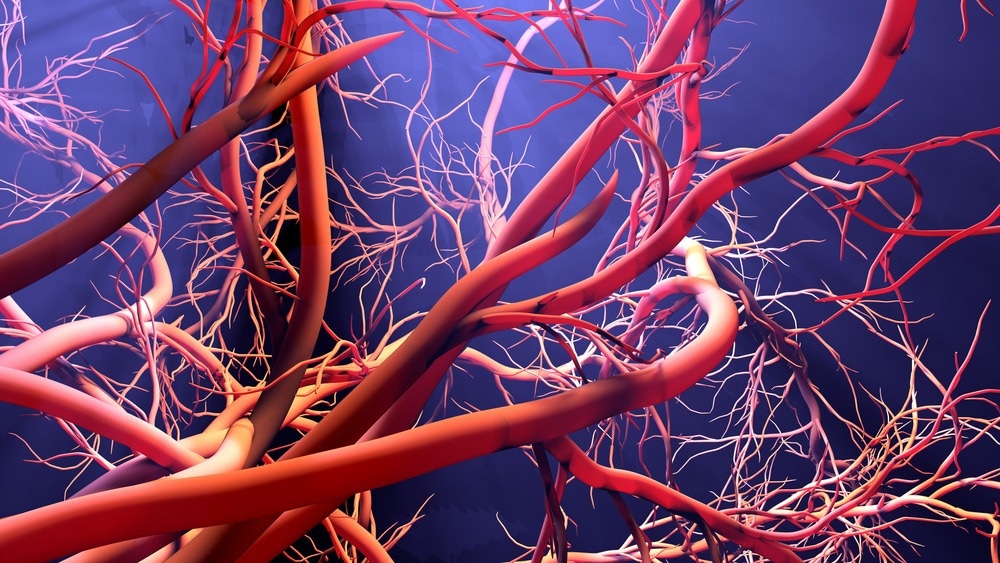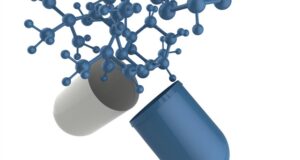Researchers discover that capillary obstruction in diabetes, triggered by elevated interleukin-10 signaling, may contribute to cognitive deficits independent of blood sugar levels.

In a recent study published in Nature Metabolism, researchers examined the impact of type 1 diabetes on capillary blood flow in the brain, exploring the mechanisms behind blockages in capillary flow and their link to cognitive impairment.
The study focused on the role of interleukin (IL)-10 signaling in capillary obstruction and used murine models to investigate potential therapeutic avenues.
Background
The brain relies on a constant supply of nutrients and oxygen to maintain its high metabolic activity. It obtains these through the blood supplied by a network of small blood vessels. Capillaries make up the majority of the brain’s vascular structure, and since they are narrow and have low pressure, they support an effective exchange of oxygen and nutrients.
However, the same properties of capillaries also make them vulnerable to blockages that can interrupt circulation either temporarily or permanently. While the risk of such blockages is relatively low in healthy individuals, inflammatory responses and illnesses such as Alzheimer’s disease and stroke significantly increase the risk.
Vascular complications are also quite common in type 1 diabetes, especially in organs such as the eyes, kidneys, and brain. Despite the higher risk of strokes and cognitive impairments among type 1 diabetes patients, there is a shortage of research on the impact of type 1 diabetes on capillary function in the brain.
About the study
In the present study, the researchers used various genetic murine models to study IL-10 signaling, which involved the knockdown of the IL-10 receptor in endothelial cells. Additionally, type 1 diabetes was induced in the mice using low-dose injections of streptozotocin, after which blood glucose levels were regularly monitored and controlled using insulin pellets during the study.
The researchers conducted in vivo photon imaging using cranial window surgeries to visualize the blood flow in the brain. For this, the mice were anesthetized, a small portion of their skull was thinned, and a coverslip was placed to allow imaging.
Labeled antibodies and fluorescent dyes were used during two-photon imaging to track the leukocytes, neutrophils, and capillary obstructions. The blocks in the capillaries were also measured using a microsphere assay in which fluorescent microspheres were injected into the mice and used to analyze obstructions in brain tissue.
The researchers also conducted several behavioral tests at four- and eight-week time points to assess the impact of type 1 diabetes on behavior and to determine whether treatment with IL-10 receptor-blocking antibodies was effective in reversing any of the behavioral impairments brought about by diabetes.
The behavioral tests included the novel object recognition test, where the mice were initially familiarized with a set of objects and then tested using a novel object to determine whether they preferred novelty.
Additionally, the Morris water maze test, where the mice learned to detect the hidden platform in a pool, was used to assess escape latency, swim speed, and memory by changing the location of the platform. The mice were also trained to find a visible platform. Other tests included measures of time taken to remove the tape from the paws and assessments of the total distance traveled inside an arena.
Furthermore, the researchers used laser Doppler to assess cerebral blood flow responses to various stimuli, such as inhalation of carbon dioxide and sensory stimuli. The cytokine levels in the blood were also measured, and the endothelial cells were isolated to perform ribonucleic acid (RNA) analysis and sequencing.
Results
The scientists found that type 1 diabetes mellitus significantly increased the risk of capillary blockages in the brain, potentially contributing to cognitive impairment. The diabetic mice had a two to four times higher incidence rate of blocked capillaries than the healthy controls, despite insulin treatment.
The capillary blocks mainly involved red blood cells and not immune cells, suggesting that the microvascular complications in type 1 diabetes may arise more from endothelial dysfunction than from clumping of white blood cells. Furthermore, the obstructions were more common in capillaries branching from arteriovenous vessels, similar to what was observed in Alzheimer’s disease models, but to a more pronounced degree.
The study also identified elevated levels of IL-10, which is an inflammatory cytokine that has shown both detrimental and protective effects in different diseases. In this case, the increased levels of IL-10 were found to exacerbate the capillary blockages and cognitive impairments.
However, experimental treatment involving the blocking of IL-10 receptors in the endothelial cells was found to increase the diameter of the capillaries by 25%, improve blood flow, and reduce capillary obstructions by 63%. These improvements were also associated with better cognitive outcomes in memory, cognitive flexibility, and learning.
The researchers reported that IL-10 might increase the incidence of blockages in diabetic mice by lowering the nitric oxide levels, which, in turn, increased the expression of adherence molecules in the capillaries, causing red blood cell aggregation.
Conclusions
Overall, the study suggested that blocking IL-10 signaling in endothelial cells in type 1 diabetes patients might lower the risk of capillary blockages in the brain and potentially improve cognitive function. However, the researchers believe that further research is essential to understand how the inhibition of IL-10 would impact other diabetes symptoms.
Source:
- Clarke, D. D. & Sokolof, L. in Basic Neurochemistry: Molecular, Cellular and
Medical Aspects 6th edn (Lippincott-Raven, 1999).
Journal reference:
- Sharma, S., Cheema, M., Reeson, P. L., Narayana, K., Boghozian, R., Cota, A. P., Brosschot, T. P., FitzPatrick, R. D., Körbelin, J., Reynolds, L. A., & Brown, C. E. (2024). A pathogenic role for IL-10 signalling in capillary stalling and cognitive impairment in type 1 diabetes. Nature Metabolism. doi:10.1038/s42255024011599, https://www.nature.com/articles/s42255-024-01159-9




